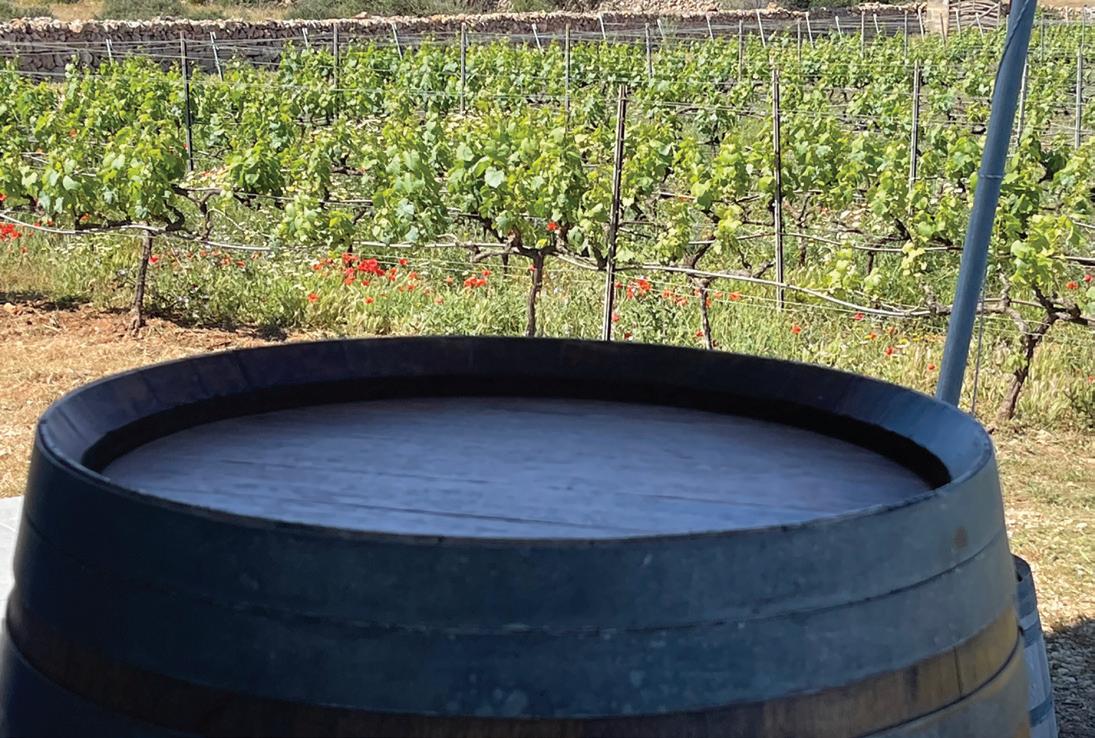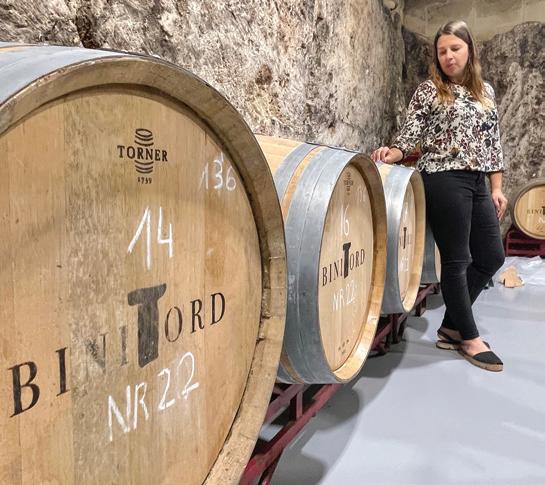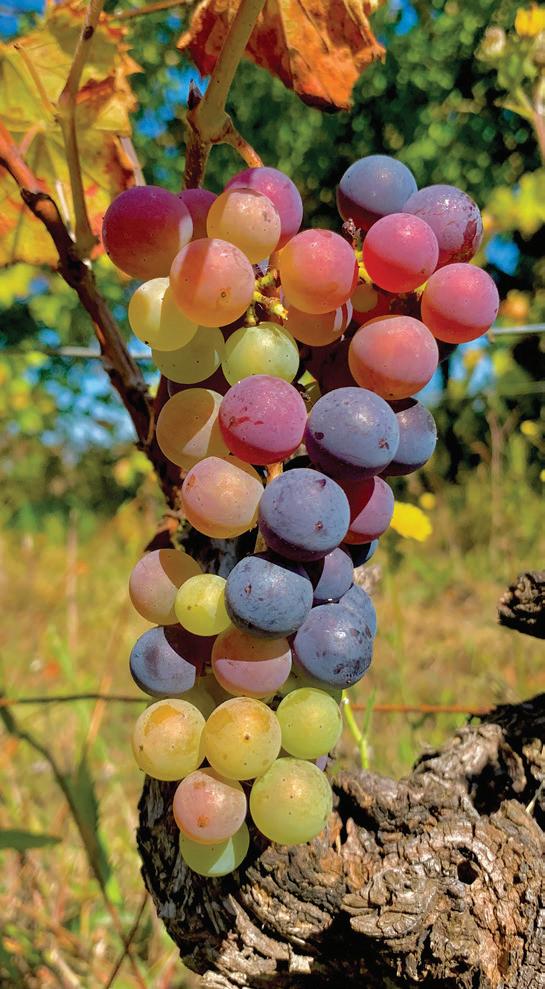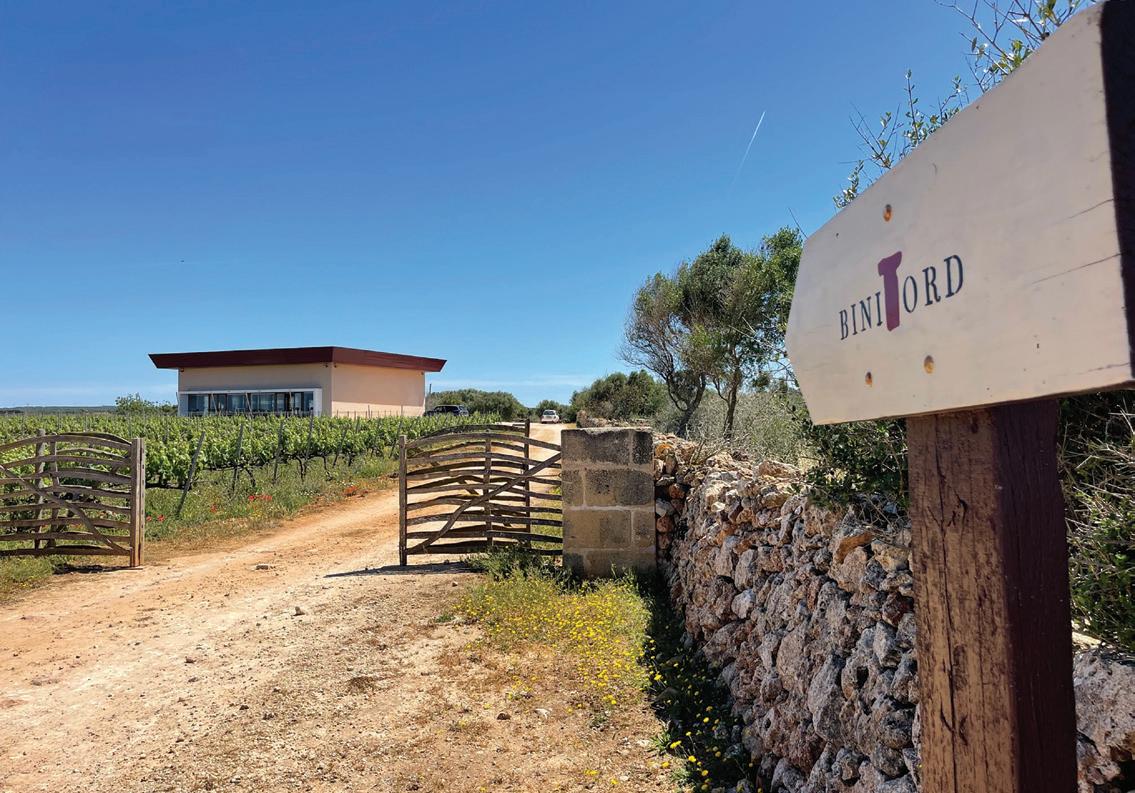
5 minute read
RIOJA
Rioja is now one of Spain’s most wellknown and respected wine regions. Bordeaux wine making know-how was imported into Rioja in the latter half of the 19th century. The pioneers realised then that careful viticulture, fruit selection, long maceration and oak ageing would be necessary to reveal Rioja’s true potential. The business model for the best traditional Rioja wineries was also inspired by the Bordelais; one of building prestige via the use of brands. While producers had the expertise about where the best wines could be made, wine merchants cared about names on labels.
In every other respect, Rioja and Bordeaux differed. The French consumers had the support of the famous Bordeaux region’s official 1855 classification. By contrast, Rioja producers were left to their own devices. To create a loyal customer base, brands have to have their own identity and be deemed reliable; however, most Rioja wineries had to buy the bulk of their grapes from small growers. Most land holdings in Rioja are tiny and have nothing in common with the powerful Bordeaux bourgeoisie and their large properties. With very few exceptions, blends are the only possibility for Rioja brands. Year after year, elite Rioja producers dedicated time and intelligence to fine-tune the art of blending.
Brands are Rioja’s ambassadors
Master blenders play a crucial role in Rioja. Their ancestors created the recipe, but season after season it had to be adapted to match the vagaries of the climate with the consistency required by the market. Rioja blends had to be quite complex, and a final blend might include several grape varieties from several vineyards and wines that have been aged differently. The Rioja region has evolved over time. Some complex segmentations have appeared because of defined market demand. The origin of the grapes became more relevant and new categories, such as “village” and “single-vineyard” wines have now been defined, but none of this has really diluted the role played by brands in Rioja. Brands are Rioja’s ambassadors, and they are identified with the region. We Rioja lovers usually get to know the region through a brand and then explore other wines. I am sure our readers have their favourites. Consequently, it is relevant to pay particular attention to brands as they indicate the quality of the Rioja region.
Blancos y rosados
White varieties of Rioja make up less than 10% of the total Rioja vineyards. These whites fall into three distinct categories. First there are the youthful “made last year, drink this year” wines, cool fermented and fresh. They do the job, especially in our ever-warmer summers. However, these cleancut unoaked whites do not really speak of their origins. At the opposite end are the great whites of Rioja. The two most famous are the long-aged Vina Tondonia Gran Reserva and the Castillo Ygay Gran Reserva Especial from Marques de Murrietta. These are wines of immense pedigree.
In between is a middle category where real interest and excitement can be found today. The good news is that they are available on our island. They should be priced from between 7 and 25 Euros and are stocked by De Vins, Enrique Penalver and other independent wine merchants on Menorca. I can thoroughly recommend some that I have tasted such as: Ramirez de Ganuza Blanco 2018, Paco Gracia Tempranillo Blanco Reserva 2016, Vina Ijalba Reserva 2018, Martines Lacuesta Blanco Classico 2018 and Muga Flor de Muga Blanco Reserva 2016.
Rioja Rosados are made, by and large, by a combination of white and red Rioja and are generally good quaffing wines. The Rosados that are a cut above the rest are those made by CVNE, Marques de Murrietta, Muga (especially the Flor de Muga Rosado 2020) and the best of them all, Lopez de Heredia, Vina Tondonia Rosado Gran Reserva 2010.
Vinedo Singluar and New Wave Rioja
There is a new Rioja category, Vinedo Singular (single-vineyard) which was approved in 2017. The majority of these wines are reds, but there are a significant number of whites. At a recent tasting by Decanter magazine the thirty wines shown performed impressively – and remember the oldest wine tasted was 2017. As well as this innovative move, another is gaining momentum: New Wave Rioja. The New Wave producers generally do not use the usual Rioja ageing rules such as Crianza, Reserva and Gran Reserva. This tends to make the wines taste more diverse and varied than traditional Rioja. They are also moving away from the dominance of Tempranillo grapes. There are now 100% Garnachas as well as more use in the blends of Mazuelo, Graciano and Marturna grape varieties. I recently drank a really lovely Palacios Remondo, Propriedad Vina Viejas Rioja 2017 in this category which I can highly recommend.
So stock up on Riojas this month and seek out well known bodegas that are good producers such as Campo Viejo, Ondarre, CVNE, Vivanco, El Coto, the three Marquesses: Riscal, Murrietta and Caceres, Vina Ijalba, Lan, Muga, Valoria, Contino, Miguel Merino, Ontanon, Urbina to mention but a few. Buy the Crianzas or, even better, the Reservas or Gran Reservas. Happy drinking!
My recommendations:
Tinto
MARQUES DE RISCAL ARIENZO CRIANZA 2018 RIOJA, GRACIANO, MAZUELO, TEMPRANILLO.14%ABV, €10.65 DE VINS.

Lovely dark red, good ripe fruit and some oak on the nose. Ripe dark fruit, mid to full-bodied, classy and elegant Rioja with good balance and finish. Good with meat.
IJALBA RIOJA GRACIANO, COSECHA 2020, 14% ABV, €13.73 ENRIQUE PENALVER.

Very dark red, almost black. Assertive damson nose. Concentrated ripe damson flavours. Mouth filling, good tannins and acidity and hint of vanilla. Will still develop. Great length with dry ripe fruit finish.
EL COTO DE RIOJA, COTO DE IMAZ RESERVA 2018, 13.5% ABV, AROUND €8, WIDELY AVAILABLE.
Deep red with a classic nose of spice and some vanilla. Classic Coto de Imaz, medium-bodied, lovely balance with a good long finish. Always a consistent Rioja. Good with red meat and stews.

VINAS SALVAJE DE MONCAYO, GARNACHA, 2020 VINO DE TIERRA, RIBERA DE QUEILES, 14.5% ABV, €6.98 ENRIQUE PENALVER.

Purplish red with a spicy ripe nose. Typical Garnacha, soft tannins, midbodied, a hint of damson and good value. Good with embotits and meat.
Rosado
EL COTO DE RIOJA ROSADO 2020, 13.5% ABV, AROUND €5 AND WIDELY AVAILABLE.
Deep salmon pink with toasty aromas. Textured with a slight spritz. Nicely fresh, savoury with plummy fruit and creamy finish. Good aperitif and with light tapas.
Blanco
BERONIA RUEDA 2021, 14% ABV, AROUND € 5.50 AND WIDELY AVAILABLE.
Pale greenish yellow. Earthy aromas and hint of lemon zest. Chalky on the palate with lively acidity and nice persistent finish.
PETIT CAUS BLANCO 2021, PENEDES, CHARDONNAY, CHENIN
BLANC AND XAREL-LO, 13% ABV, €8.20 DE VINS.
Light straw colour, fruity on the nose, highlighting the Xarel-lo. Very fresh in the mouth, lovely tasty and well-balanced. Very drinkable. Drink as an aperitif or with light fish dishes.
Just 6km south of Ciutadella, there is a beautiful, small and eco-friendly vineyard run by Clara Salord. Binitord grew from a small, private, family dream into a successful business producing award-winning wines and Vermut. It was the stories of the delicious Vermut that drew







In 2002, Clara’s parents and their 2 close friends started to grow vines on their own land and produced wine for their own use. They experimented with different ecologically friendly methods and, in 2007, they started to sell the wine. Clara has taken over the running of the business, after studying Oenology, the science of wine and wine making, at the Institute of Tarragona followed by further studies in the food industry. She continues to work closely with her professor, organisations such as the Institute for Genetic Analysis, and with GOB to improve the quality of the grapes and the production process. The vineyard now extends to 10 hectares.










